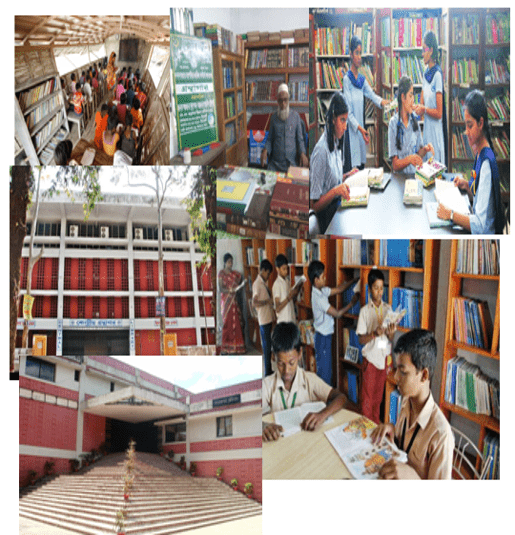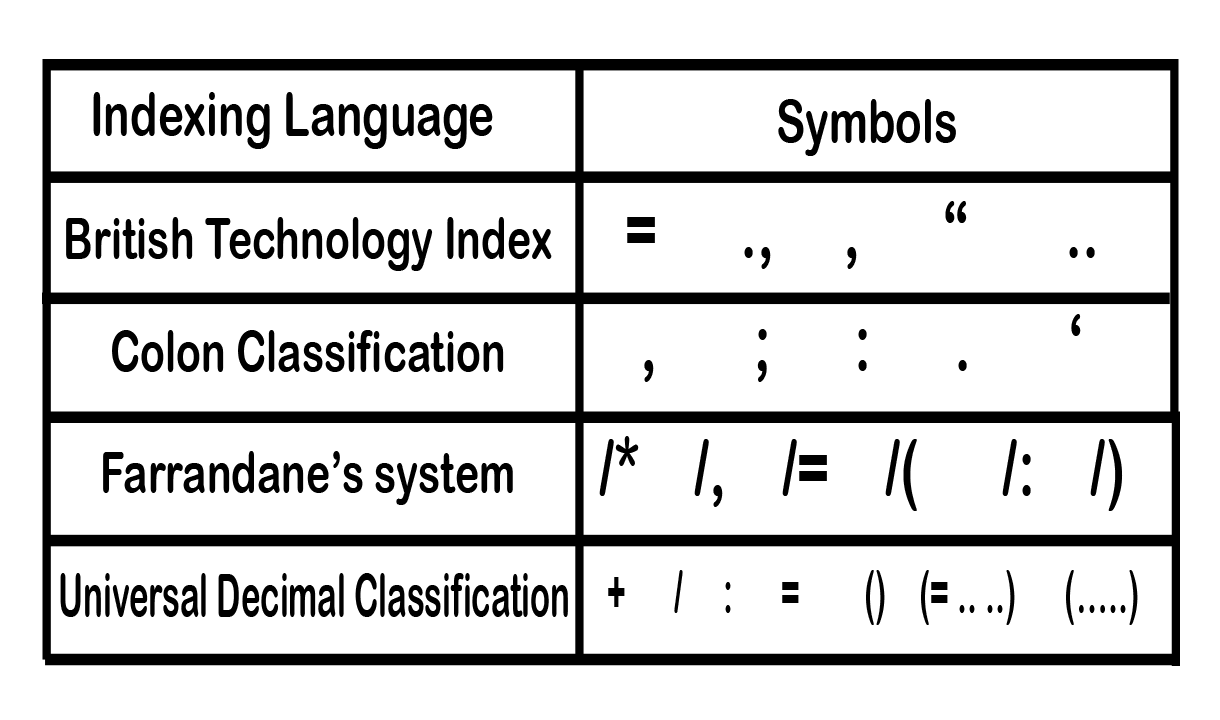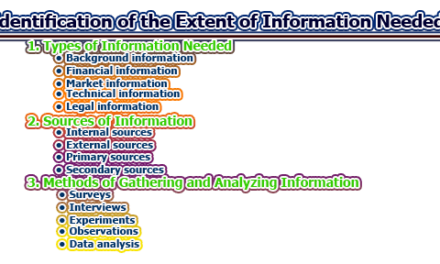Selection of Non-Book and Non-Print Materials for Library:
Libraries have evolved from being solely repositories of books and print materials to becoming multi-faceted information centers. The inclusion of non-book and non-print materials has become essential in meeting the evolving needs of library users. Here are some factors to consider when selecting non-book and non-print materials for a library.
1. Understanding User Needs: To effectively select non-book and non-print materials, librarians must have a thorough understanding of the needs and preferences of their user base. This section delves into various methods for gathering user feedback, such as surveys, focus groups, and analysis of borrowing patterns. By gaining insights into the interests, age groups, educational levels, and information-seeking behaviors of library users, librarians can make informed decisions about the types of materials to acquire.
2. Demographics and Cultural Relevance: Libraries serve diverse communities, and it is crucial to reflect this diversity in their collections. This section explores the importance of considering demographics and cultural relevance when selecting non-book and non-print materials. It discusses strategies for acquiring materials in different languages, films from various countries, resources that highlight the experiences of marginalized communities, and materials that address the specific needs of different age groups and educational levels.
3. Technological Advancements: The digital age has transformed the way information is accessed and consumed. This section highlights the significance of incorporating electronic resources into library collections. It explores the benefits of e-books, e-audio books, digital databases, and other digital media formats. Additionally, it discusses emerging technologies, such as virtual reality (VR) and augmented reality (AR), and their potential to enhance the learning experience. Libraries are encouraged to regularly assess the availability and relevance of electronic resources and invest in technology that aligns with their patrons’ needs.
4. Collaborations and Partnerships: Collaborations and partnerships can greatly enrich a library’s non-book and non-print collections. This section explores the benefits of working with local educational institutions, community organizations, and subject-matter experts. It discusses how collaborations can provide access to unique resources, educational kits, multimedia materials, and expertise in specialized fields. Examples of successful partnerships are provided to inspire librarians to seek out similar opportunities in their own communities.
5. Popularity and Demand: Staying up to date with popular trends and demands is essential for a vibrant and engaging library collection. This section emphasizes the importance of monitoring current events, popular culture, and emerging topics when selecting non-book and non-print materials. It provides strategies for acquiring materials related to popular television shows, movies, music, sports, and emerging technologies. Libraries are encouraged to actively seek patron input through suggestion programs, surveys, and engagement activities.
6. Accessibility and Universal Design: Libraries must ensure that their collections are accessible to all patrons, regardless of their abilities. This section emphasizes the importance of adopting a universal design approach when selecting non-book and non-print materials. It explores strategies for providing inclusive resources, such as captioned videos, audiobooks, large print materials, tactile resources, and assistive technologies. Librarians are encouraged to consider accessibility guidelines and consult with experts to ensure their collections are accessible to individuals with different needs.
7. Budget and Resource Allocation: Effective selection of non-book and non-print materials requires careful budgeting and resource allocation. This section explores strategies for maximizing available resources while expanding collections. It discusses the benefits of collaborating with other libraries or participating in consortiums to share costs and increase access to a wider range of materials. Libraries are encouraged to consider creative funding sources, grants, and partnerships to support their acquisitions.
8. Copyright and Licensing Considerations: When selecting non-book and non-print materials for library collections, it is important to consider copyright and licensing issues. Copyright law governs the rights and restrictions associated with the use, reproduction, and distribution of creative works. Libraries must ensure that they comply with copyright laws and respect the intellectual property rights of content creators. This section highlights key considerations related to copyright and licensing in the selection of non-book and non-print materials.
- Understanding Copyright Law: Librarians should have a solid understanding of copyright law and how it applies to the acquisition and use of non-book and non-print materials. Copyright protection grants exclusive rights to the creators of original works, including literary, artistic, musical, and audiovisual works. It is essential to know the duration of copyright protection, the rights of copyright holders, and the limitations and exceptions to copyright law, such as fair use or fair dealing provisions.
- Licensing Options: Many non-book and non-print materials are subject to licensing agreements rather than outright purchase. Licensing allows libraries to access and use digital content while respecting the rights of content creators. It is crucial to carefully review licensing agreements and ensure compliance with the terms and conditions specified by the licensors. Licenses may specify usage restrictions, limitations on the number of simultaneous users, or conditions for public performance or display.
- Open Access and Creative Commons: Libraries can expand their collection of non-book and non-print materials by considering open access resources and works released under Creative Commons licenses. Open access materials are freely available online, allowing users to access, use, and distribute them without copyright restrictions. Creative Commons licenses provide a range of permissions for creators to specify how their works can be used, shared, and modified. Libraries should promote open access materials and educate users about their benefits.
- Permissions and Clearance: For non-book and non-print materials that are not in the public domain or covered by open access licenses, obtaining permissions and clearances is essential. This applies to materials such as audiovisual works, music, images, and other copyrighted content. Libraries should establish protocols for seeking permissions, including contacting rights holders, negotiating usage rights, and securing necessary clearances for public performance, reproduction, or distribution.
- Fair Use and Fair Dealing: Libraries may rely on fair use (in the United States) or fair dealing (in other jurisdictions) provisions to legally use copyrighted materials without obtaining permissions. Fair use/fair dealing allows for limited use of copyrighted works for purposes such as education, research, criticism, commentary, and news reporting. Librarians should be familiar with the factors that determine fair use/fair dealing, such as the purpose and character of the use, the nature of the copyrighted work, the amount used, and the potential impact on the market for the original work.
- Digital Rights Management (DRM): Digital Rights Management refers to the technological measures employed to protect and manage access to digital content. Some non-book and non-print materials may be protected by DRM, which can restrict the use and distribution of the materials. Libraries should be aware of DRM restrictions and ensure compatibility with their systems and devices. It is important to balance DRM protection with the needs of library users to access and use materials conveniently.
- Compliance and Education: Libraries have a responsibility to educate staff, patrons, and the wider community about copyright and licensing issues. This can be achieved through workshops, training sessions, informational materials, and online resources. By promoting copyright compliance and responsible use of non-book and non-print materials, libraries can foster a culture of respect for intellectual property and support the creative community.
- Ongoing Monitoring and Updates: Copyright laws, licensing agreements, and usage rights can change over time. Libraries should stay informed about updates in copyright legislation and regularly review licensing agreements to ensure compliance. Ongoing monitoring of copyright and licensing issues ensures that libraries can adapt their collections and practices accordingly.
9. Evaluation and Weeding: Periodic evaluation and weeding are essential for maintaining a relevant and up-to-date non-book and non-print collection. This section provides guidelines for assessing the usage statistics, condition, and relevance of materials. It emphasizes the importance of involving library users in the evaluation process through surveys and feedback mechanisms. Criteria for weeding materials, such as circulation rates, user feedback, relevance to the collection, and condition, are discussed, along with strategies for responsibly discarding or repurposing materials.
Libraries today offer an extensive range of non-book and non-print materials to cater to diverse interests and learning styles. Here are examples of such materials that libraries may provide:
Audiovisual Materials:
– DVDs and Blu-ray discs: Movies, documentaries, TV series, and educational content.
– CDs and audiobooks: Music albums, spoken-word recordings, language learning programs, and audio dramas.
– Streaming services: Access to digital platforms that provide movies, TV shows, music, and audiobooks.
Digital Media:
– E-books and e-readers: Access to electronic books and devices for reading e-books.
– E-audio books: Digital versions of audiobooks that can be downloaded or streamed.
– Digital magazines and newspapers: Online subscriptions to magazines and newspapers, accessible through library websites or digital platforms.
Educational Kits and Manipulatives:
– STEM kits: Science, technology, engineering, and mathematics kits for hands-on learning and experiments.
– Language learning kits: Resources for learning different languages, including books, audio materials, and flashcards.
– Art and craft kits: Supplies and instructions for various art and craft projects.
Electronic Databases and Online Resources:
– Research databases: Access to scholarly journals, articles, and research materials.
– Online learning platforms: Subscriptions to platforms that offer online courses and tutorials on various subjects.
– Digital archives: Access to historical documents, photographs, and primary sources.
Multimedia Resources:
– Gaming consoles and video games: Consoles such as Xbox, PlayStation, or Nintendo Switch, along with a collection of video games.
– Virtual reality (VR) and augmented reality (AR) experiences: Equipment and software that allow users to explore immersive virtual or augmented environments.
Music and Film Collections:
– Vinyl records: Collections of vinyl records spanning various music genres and eras.
– Local music collections: Showcasing and promoting local artists and musicians.
– Film collections: Classic movies, international films, documentaries, and indie films.
Technology and Equipment:
– Laptops and tablets: Available for in-library use or borrowing.
– Digital cameras and recording equipment: Available for patrons to borrow for personal projects or documentation purposes.
– Assistive technology devices: Devices such as screen readers or magnifiers for individuals with visual impairments.
Board Games and Puzzles:
– Board games: A collection of popular board games suitable for all ages and interests.
– Puzzles: Jigsaw puzzles of different themes and difficulty levels.
Seed Libraries:
– Seed packets: Collections of seeds for gardening, promoting sustainability, and community engagement.
Exploration Kits:
– Nature exploration kits: Kits containing guides, tools, and resources for exploring the outdoors and learning about the natural environment.
– Cultural exploration kits: Kits that introduce different cultures, traditions, and customs through books, artifacts, and activities.
These examples demonstrate the breadth and diversity of non-book and non-print materials that libraries may provide, fostering engagement, learning, and exploration among their patrons.
In conclusion, the selection of non-book and non-print materials is a multifaceted and evolving process that requires librarians to be responsive to user needs, technological advancements, and copyright regulations. By embracing these considerations, libraries can curate comprehensive collections that inspire, inform, and engage their patrons. The inclusion of non-book and non-print materials ensures that libraries continue to be vibrant hubs of knowledge, supporting lifelong learning and fostering a love of exploration in their communities.
FAQs:
How can I access the non-book and non-print materials at the library?
The access to non-book and non-print materials may vary depending on the library. In most cases, you can visit the library in person and browse the physical collection. Some materials may be available for borrowing, while others may be restricted to in-library use. For digital resources, libraries often provide access through their websites or online platforms. You may need a library card or a specific login to access digital materials remotely.
Are there any additional fees or charges for accessing non-book and non-print materials?
Libraries generally do not charge additional fees for accessing non-book and non-print materials. However, there may be certain materials or services that require a fee, such as renting equipment or participating in specialized programs or workshops. It’s best to check with your local library for any specific charges associated with accessing certain materials or services.
Can I suggest non-book and non-print materials for the library to acquire?
Yes, many libraries welcome suggestions from patrons regarding materials to add to their collections. Libraries often have suggestion forms or systems in place where you can recommend specific non-book and non-print materials. Additionally, libraries may conduct surveys or seek feedback from patrons to gauge their interests and preferences for future acquisitions.
How long can I borrow non-book and non-print materials from the library?
The borrowing periods for non-book and non-print materials may vary depending on the library and the specific item. For physical items like DVDs, CDs, or educational kits, libraries typically have borrowing periods ranging from a few days to a few weeks. Digital materials such as e-books or e-audio books may have borrowing periods defined by the library’s digital lending platform. It’s advisable to check with your library about the specific borrowing periods for different types of non-book and non-print materials.
Can I access non-book and non-print materials if I have accessibility needs?
Libraries strive to ensure that their collections are accessible to all patrons, including those with accessibility needs. They may provide accommodations such as large print materials, captioned videos, assistive technologies, or accessible formats for digital resources. Libraries may also have dedicated staff who can assist individuals with specific accessibility requirements. It’s recommended to contact your library and inform them of your accessibility needs so that they can provide appropriate support and guidance.
Can I access non-book and non-print materials remotely?
Yes, many libraries offer remote access to non-book and non-print materials through digital platforms. This allows patrons to access e-books, audiobooks, digital magazines, streaming services, and other digital resources from their own devices, wherever they have an internet connection. Libraries may require patrons to create an account or log in with their library card credentials to access these materials remotely.
How often are non-book and non-print materials updated or added to the library’s collection?
The frequency of updates and additions to non-book and non-print materials varies among libraries. Libraries aim to regularly refresh their collections to provide a diverse and relevant selection for their patrons. The frequency of updates can depend on factors such as budgetary considerations, user demand, and availability of new materials. Some libraries may have specific acquisition schedules or conduct regular assessments to ensure their collections remain current and engaging.
Can I reserve non-book and non-print materials in advance?
Yes, many libraries allow patrons to reserve non-book and non-print materials in advance. If an item you wish to borrow is currently checked out or unavailable, you can typically place a hold or reservation on it. Once the item becomes available, the library will notify you, and you can pick it up or arrange for delivery based on the library’s policies and procedures.
Are there any restrictions on the use of non-book and non-print materials?
Libraries may have specific guidelines and restrictions on the use of non-book and non-print materials. For example, there may be limitations on the number of items that can be borrowed simultaneously, restrictions on public performance or display of certain materials, or specific conditions for using equipment or accessing digital resources. It’s advisable to familiarize yourself with the library’s policies and guidelines regarding the use of non-book and non-print materials to ensure compliance and make the most of your library experience.
How can I provide feedback or report issues with non-book and non-print materials?
Libraries value feedback from their patrons regarding the non-book and non-print materials they provide. If you have feedback, suggestions, or issues with any materials, you can typically contact the library’s staff or administration. They may have designated channels for feedback, such as suggestion forms, email addresses, or in-person consultations. By sharing your experiences and thoughts, you can contribute to the improvement and enhancement of the library’s non-book and non-print collections and services.
References:
- American Library Association. (2015). Library Collection Development: Policies and Procedures.
- Association for Library Service to Children (ALSC). (2017). Building a Home Library.
- Canadian Federation of Library Associations. (2018). Intellectual Freedom and Libraries.
- IFLA Section on Audiovisual and Multimedia. (2017). Guidelines for Audiovisual and Multimedia Materials in Libraries and other Institutions.
- International Federation of Library Associations and Institutions (IFLA). (2021). IFLA Trend Report 2021 Update.
- Matarazzo, J. M., & Pearlstein, T. (2012). The Public Library Manager’s Forms, Policies, and Procedures Handbook with CD-ROM. American Library Association.
- Ruppel, M., & Schuster, K. (2019). Managing Nonprint Collections: A Holistic Approach. ABC-CLIO.
- United Nations Educational, Scientific and Cultural Organization (UNESCO). (2015). Guidelines for the Development of a National Policy for Libraries.
- Young, C., & Harris, M. (2014). Collaborative Library Lessons for the Primary Grades: Linking Research Skills to Curriculum Standards. American Library Association.

Library Lecturer at Nurul Amin Degree College










